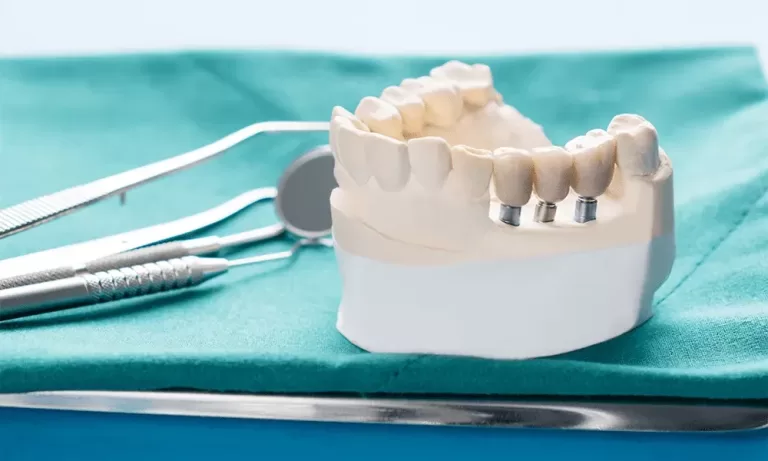Weight loss has always been a topic of fascination and frustration. From fad diets to celebrity-endorsed workout routines, many people have tried a range of solutions with varying degrees of success. But in recent years, a new name has entered the scene, semaglutide, and it’s not just another quick fix. Originally developed for diabetes, semaglutide has now emerged as a transformative option for those struggling with obesity and weight management.
More than just a buzzword, semaglutide is part of a class of medications that is changing how we understand and treat excess weight. Let’s take a closer look at what it is, how it works, and why more people are seeking out treatments like semaglutide weight loss in Katy and other cities across the country.
What is Semaglutide?
Semaglutide is a glucagon-like peptide-1 (GLP-1) receptor agonist. That may sound complicated, but the idea is relatively simple. GLP-1 is a hormone your body naturally produces to regulate appetite and food intake. Semaglutide mimics this hormone, helping to reduce hunger and increase feelings of fullness.
Originally approved by the FDA for treating type 2 diabetes under brand names like Ozempic, it soon became clear that patients were losing significant weight while taking the medication. This sparked interest in using semaglutide specifically for weight management, leading to the development of a weight loss version called Wegovy.
Why It Works: More Than Willpower
Weight gain is often blamed on lack of discipline, but science tells a more complex story. Hormones, metabolism, lifestyle, and even genetics play major roles in a person’s ability to manage weight. What makes semaglutide so compelling is that it addresses the biological component by altering how the brain responds to hunger signals.
Instead of trying to battle cravings with sheer willpower, patients using semaglutide often find they naturally feel less hungry and more satisfied with smaller portions. That changes the game entirely, especially for those who have struggled with repeated cycles of weight loss and gain.
Clinical Evidence and Results
The effectiveness of semaglutide has been backed by multiple clinical studies. In one of the most cited trials published in the New England Journal of Medicine, participants who took semaglutide lost an average of 14.9% of their body weight over 68 weeks, compared to just 2.4% in the placebo group.
The participants also experienced improvements in cardiovascular health, blood sugar levels, and overall quality of life. These results have made semaglutide one of the most promising drugs for weight loss in recent memory, earning it both medical and public attention.
What to Expect When Starting
People interested in semaglutide weight loss programs typically begin with a consultation, either through a medical clinic or a telehealth provider. The starting dose is low and gradually increases to minimize side effects such as nausea or stomach discomfort. This ramp-up period helps the body adjust to the medication and improves patient adherence.
Most plans also include lifestyle coaching, nutrition guidance, and regular check-ins to monitor progress. It’s not a standalone solution, but rather a tool that works best in combination with healthier habits.
In areas like Katy, Texas, demand has grown for clinics offering semaglutide weight loss in Katy as more residents seek science-backed, physician-supervised programs. These clinics often take a holistic approach, tailoring treatment to the individual’s needs and medical background.
Risks and Considerations
Like any medication, semaglutide isn’t right for everyone. It is generally recommended for individuals with a body mass index (BMI) of 30 or higher, or 27 and higher with related health conditions like high blood pressure or type 2 diabetes.
Some of the most common side effects include nausea, vomiting, diarrhea, and constipation. In rare cases, more serious risks like pancreatitis or gallbladder disease have been reported. That’s why a medical evaluation is essential before starting treatment.
Pregnant individuals or those planning to become pregnant should avoid semaglutide, as its effects on fetal development are not well understood.
How It Fits Into Long-Term Health Goals
Perhaps the most encouraging aspect of semaglutide is how it can fit into long-term health strategies. Unlike crash diets that leave people feeling deprived and defeated, semaglutide creates space for more sustainable changes.
Patients often report not only weight loss, but improved energy, sleep, and emotional well-being. These ripple effects can lead to a positive feedback loop, where success builds upon itself and motivates further healthy choices.
It’s also worth noting that semaglutide can potentially reduce the risk of heart disease, stroke, and diabetes, making it a proactive investment in one’s future health.
The Cost Factor and Insurance Coverage
One of the barriers to wider adoption has been cost. Semaglutide can be expensive, especially when not covered by insurance. However, some insurance plans do include coverage for obesity treatment, particularly if the patient has related conditions.
Many clinics offer financing plans or work with pharmaceutical companies that provide discount cards or patient assistance programs. It’s always a good idea to ask about these options during an initial consultation.
What Patients Are Saying
Personal stories often carry more weight than statistics. From busy parents trying to improve their energy to professionals seeking to regain control of their health, the testimonials from people who have used semaglutide are compelling.
Many describe it as the first time in years they’ve been able to lose weight and keep it off. One common thread is the feeling of control, the ability to say no to food without overwhelming cravings. That sense of empowerment can be life-changing.
In Katy, patients visiting local clinics offering semaglutide weight loss in Katy often note that the supportive environment and medical guidance were just as important as the medication itself.
The Road Ahead
As research continues and public interest grows, it’s likely that semaglutide will become more accessible and widely accepted. Already, pharmaceutical companies are developing similar drugs, some with weekly or even daily dosing options.
For now, semaglutide stands out not only because of its clinical success but also because of the way it challenges our assumptions about weight loss. It shows that biology is not destiny, and that science-based solutions can offer real hope to those who’ve tried everything else.
Whether you’re considering it for yourself or just curious about the buzz, semaglutide represents a shift in how we treat obesity, not as a failure of will, but as a complex condition that deserves serious medical attention.













